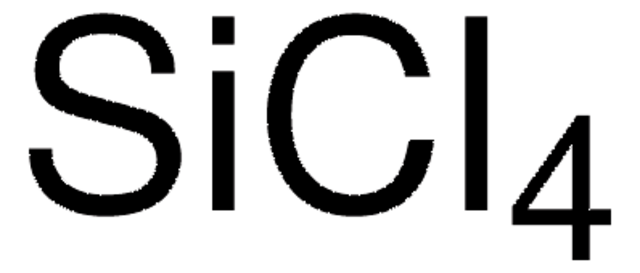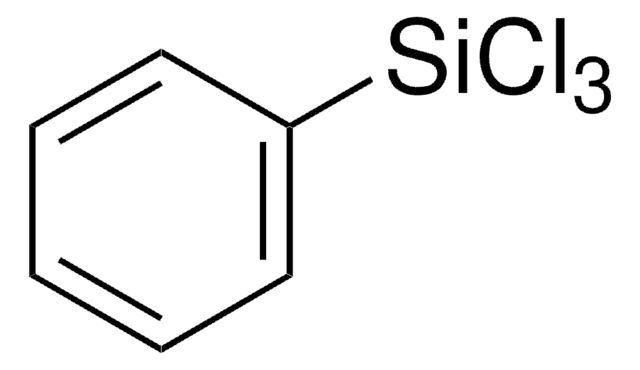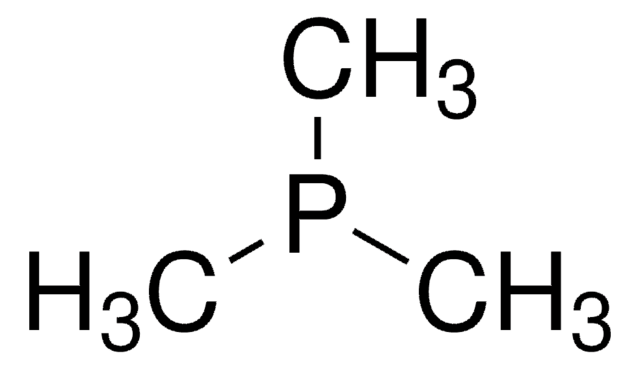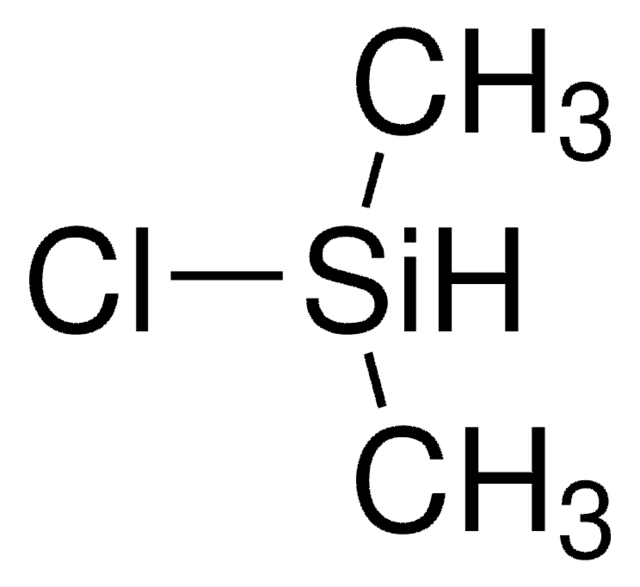175552
Trichlorosilane
99%
Synonyme(s) :
Hydrotrichlorosilane, Silicochloroform, Silicon chloride hydride, Trichloromonosilane
About This Item
Produits recommandés
Densité de vapeur
1 (vs air)
Niveau de qualité
Pression de vapeur
9.75 psi ( 20 °C)
Essai
99%
Forme
liquid
Limite d'explosivité
70 %
pb
32-34 °C (lit.)
Densité
1.342 g/mL at 25 °C (lit.)
Température de stockage
2-8°C
Chaîne SMILES
Cl[SiH](Cl)Cl
InChI
1S/Cl3HSi/c1-4(2)3/h4H
Clé InChI
ZDHXKXAHOVTTAH-UHFFFAOYSA-N
Vous recherchez des produits similaires ? Visite Guide de comparaison des produits
Catégories apparentées
Description générale
Application
Other possible applications:
- Asymmetric reduction of N-aryl ketimines in the presence of a novel
L-valine-derived catalyst to form secondary amines.
- Hydrosilylation of imidazolinones to form chiral imidazolidinones in the presence of a 2,2′-bispyrrolidine based Lewis base organocatalyst.
- Trichlorosilane activated with chiral N-formylproline
derivatives is an effective reagent for the reduction of imines to form
enantiomerically enriched amines.
- Trichlorosilane reacts with dimethylformamide to form hypervalent hydridosilicates, which can reduce aldehydes to alcohols, imines to amines, and also for the reductive amination of aldehydes.
Mention d'avertissement
Danger
Mentions de danger
Conseils de prudence
Classification des risques
Acute Tox. 3 Inhalation - Acute Tox. 4 Oral - Eye Dam. 1 - Flam. Liq. 1 - Skin Corr. 1A - Water-react 1
Risques supp
Code de la classe de stockage
4.3 - Hazardous materials which set free flammable gases upon contact with water
Classe de danger pour l'eau (WGK)
WGK 1
Point d'éclair (°F)
<-2.2 °F - Equilibrium method
Point d'éclair (°C)
< -19 °C - Equilibrium method
Équipement de protection individuelle
Faceshields, Gloves, Goggles
Faites votre choix parmi les versions les plus récentes :
Déjà en possession de ce produit ?
Retrouvez la documentation relative aux produits que vous avez récemment achetés dans la Bibliothèque de documents.
Les clients ont également consulté
Notre équipe de scientifiques dispose d'une expérience dans tous les secteurs de la recherche, notamment en sciences de la vie, science des matériaux, synthèse chimique, chromatographie, analyse et dans de nombreux autres domaines..
Contacter notre Service technique












